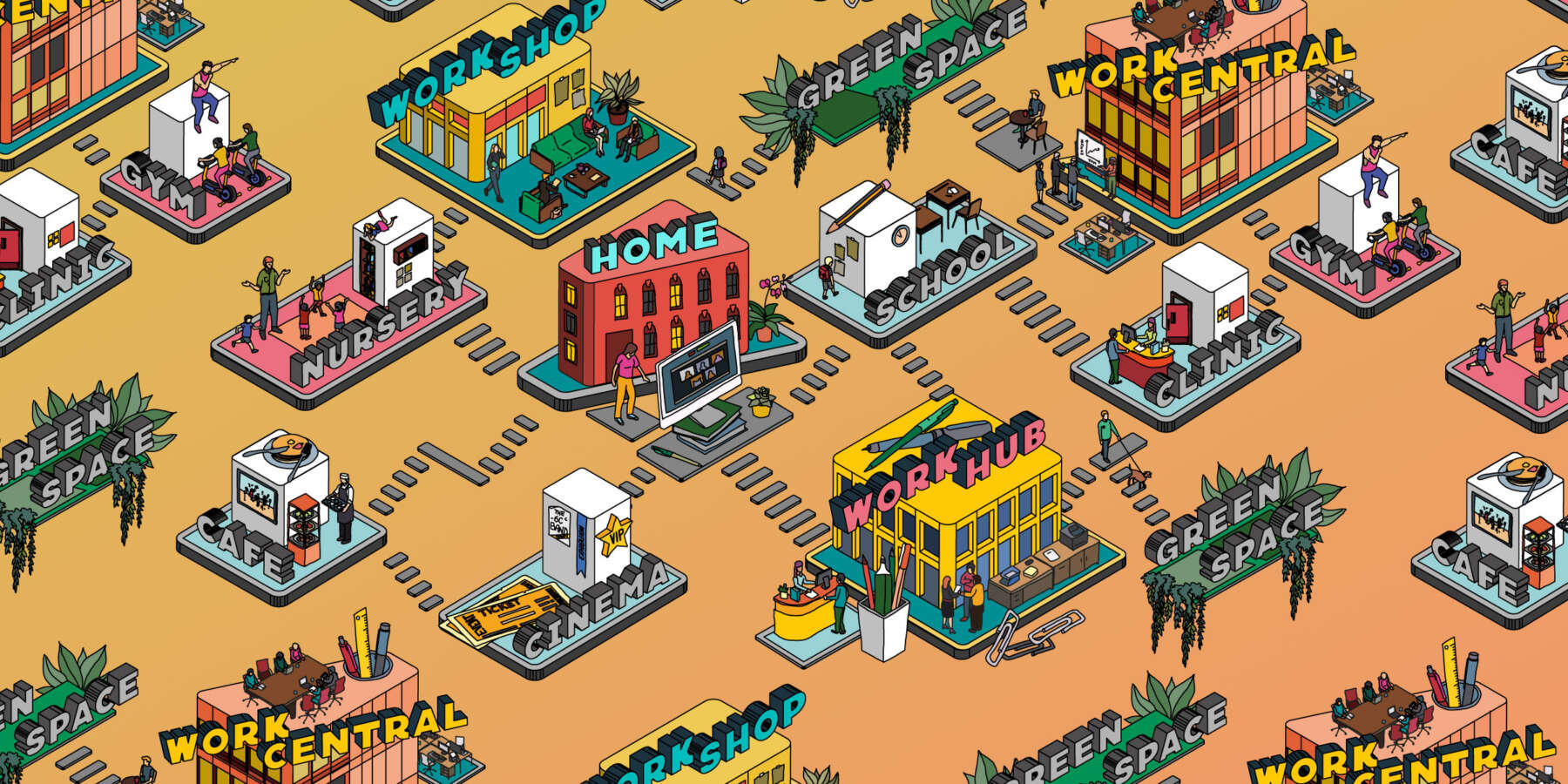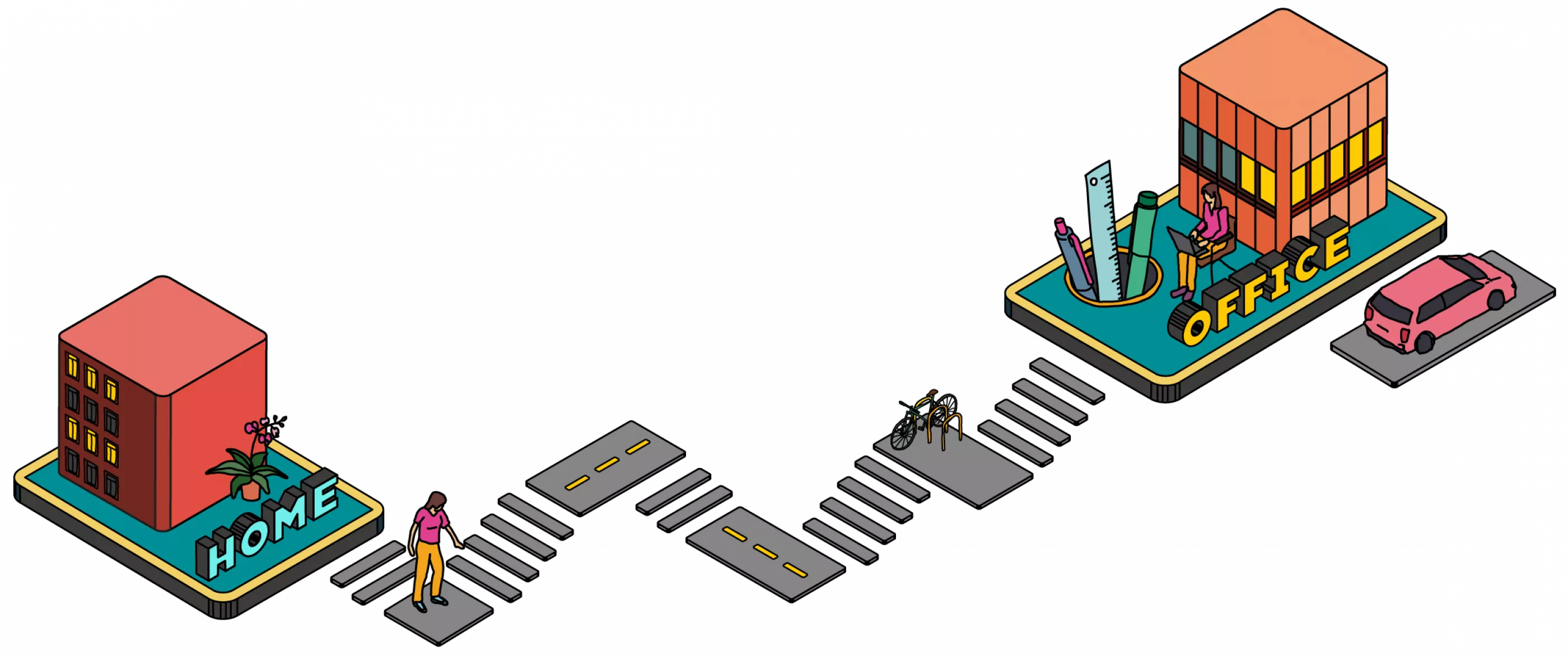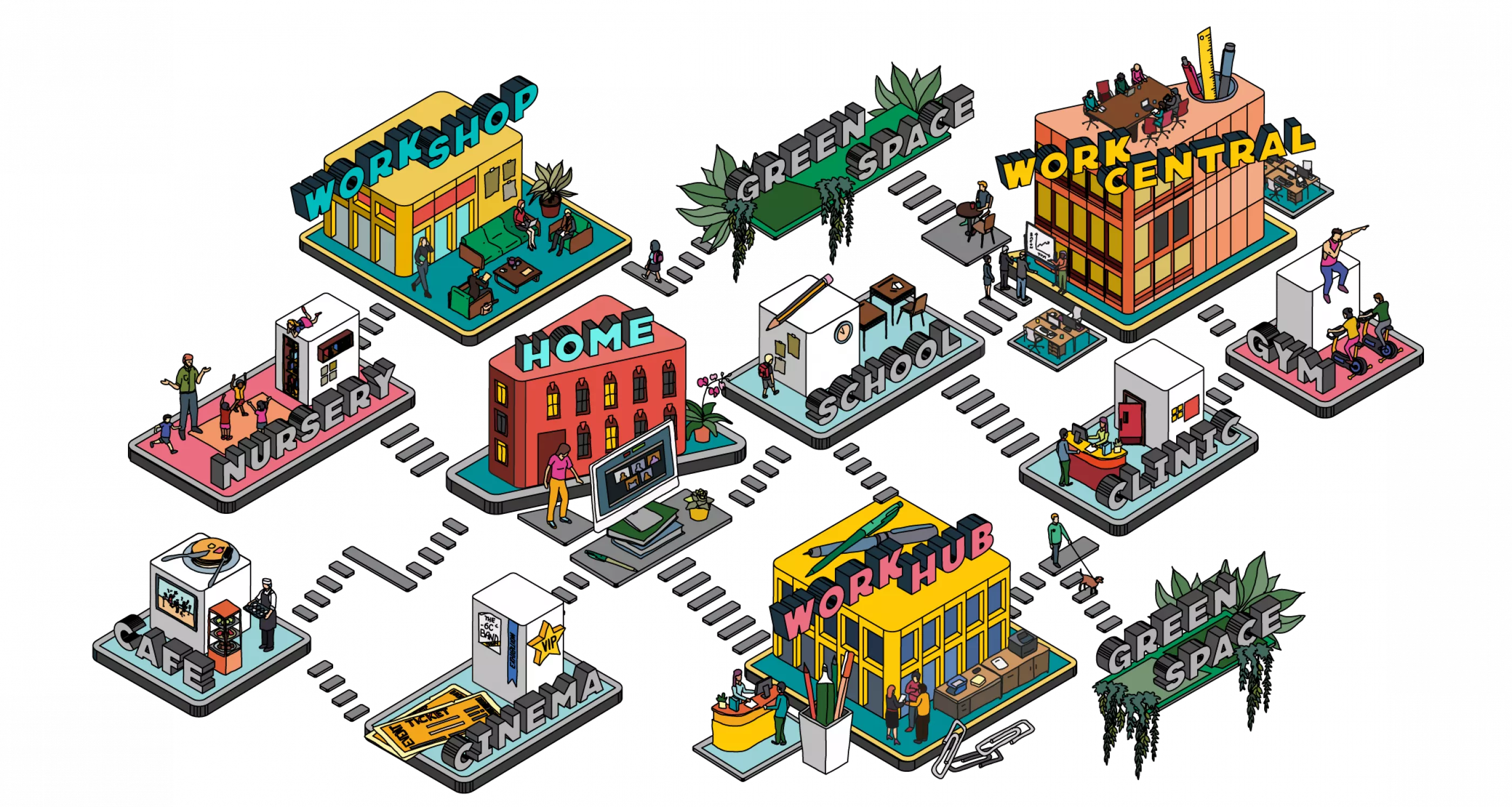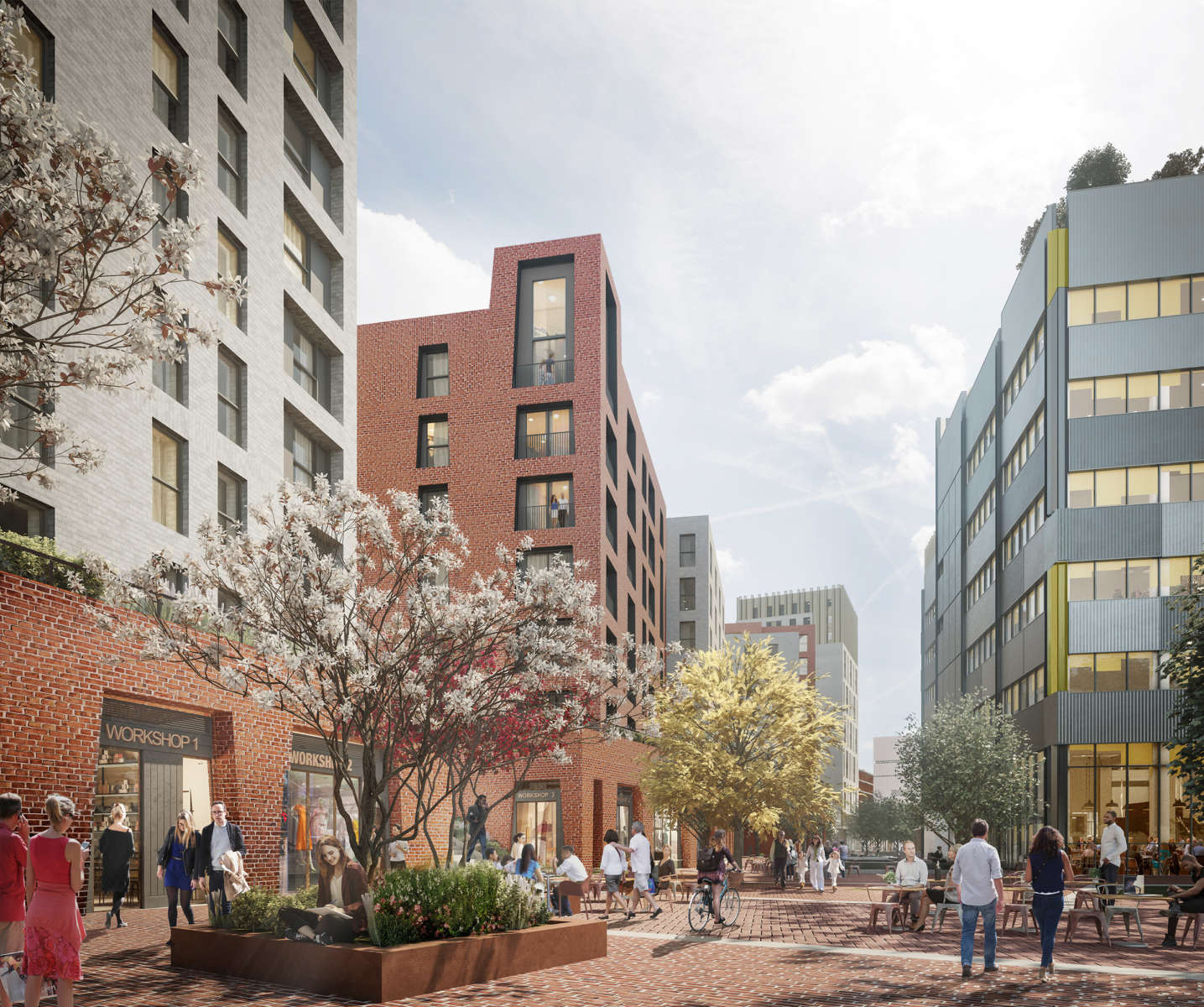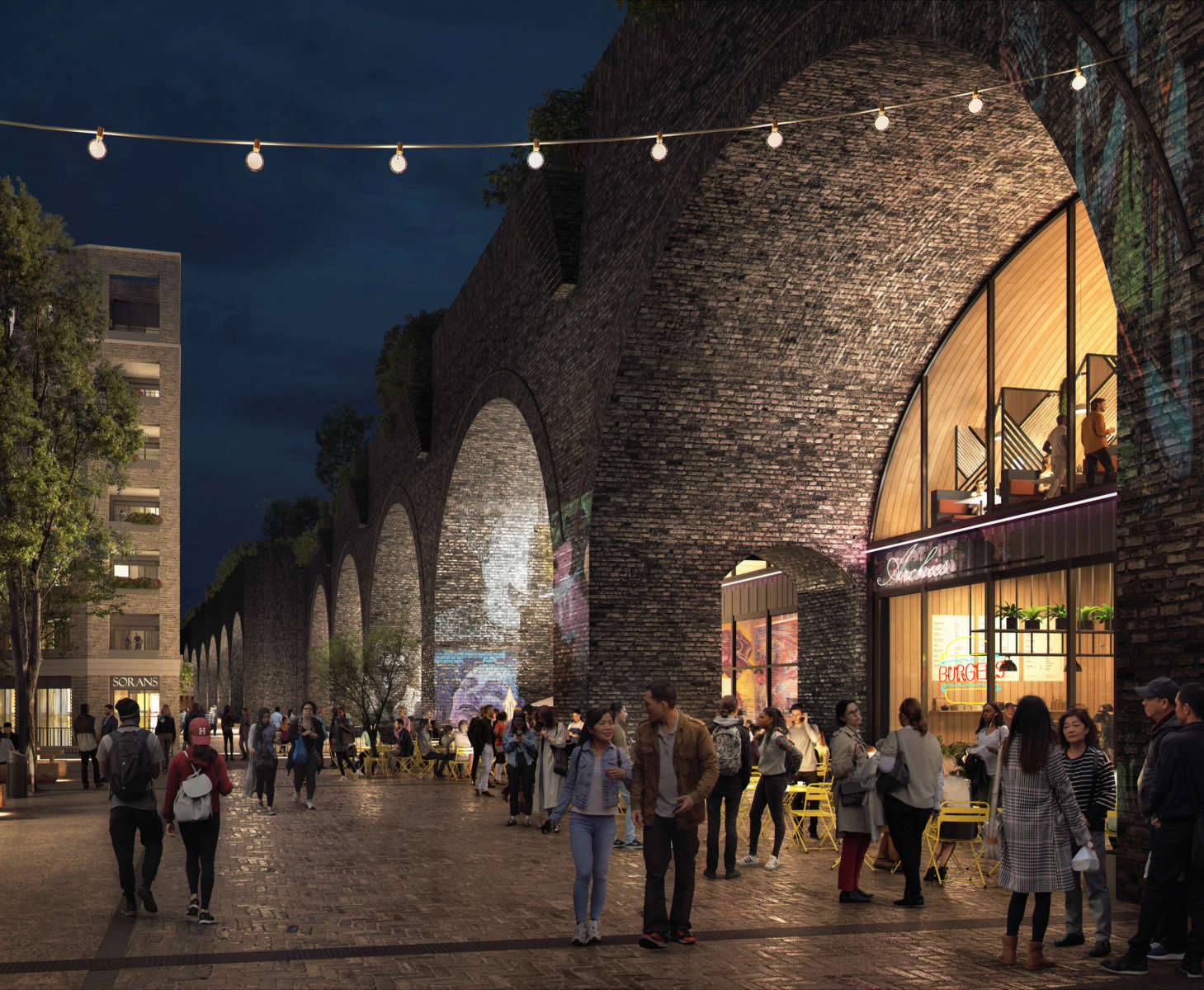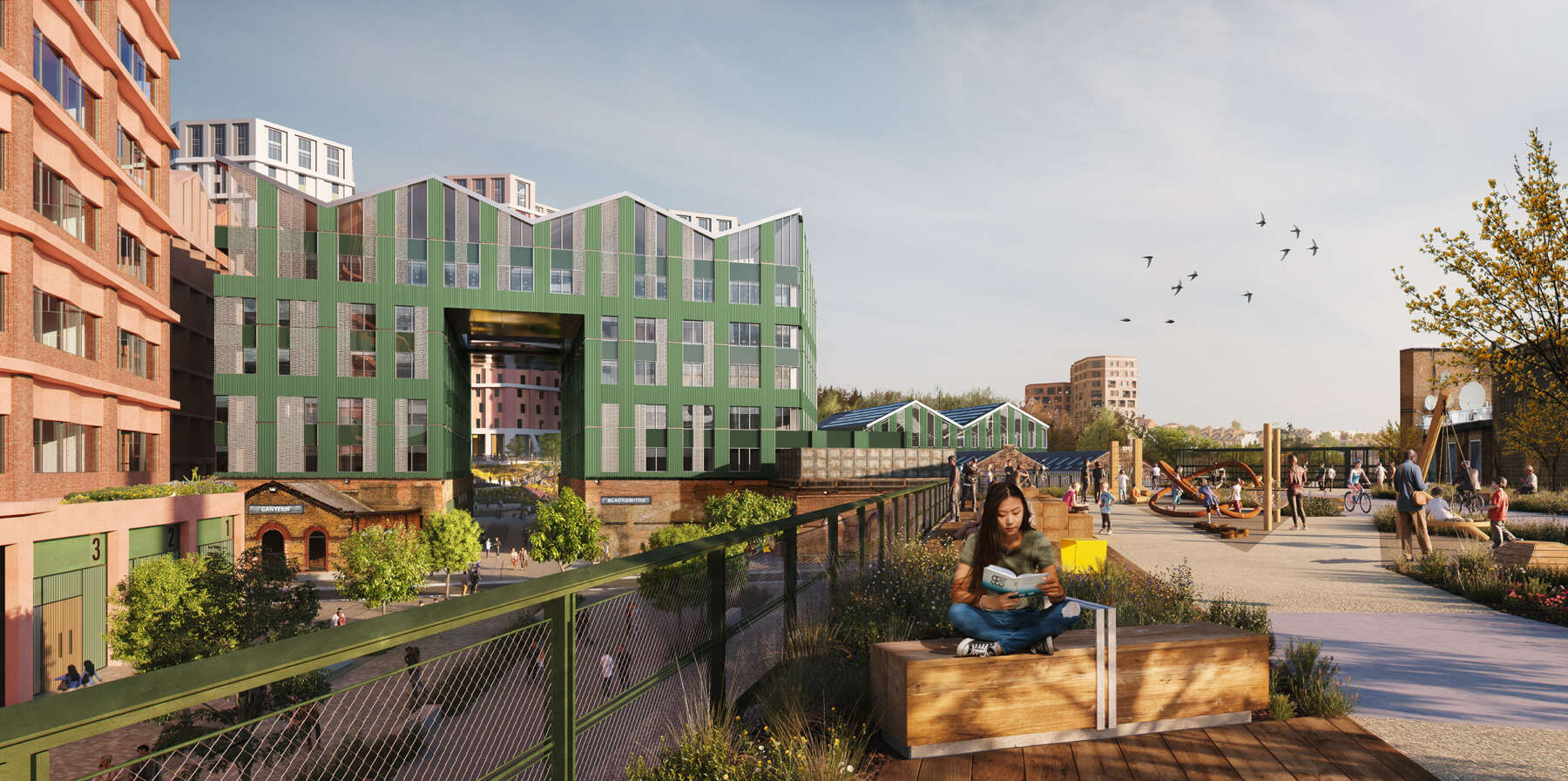The pre-pandemic approach to achieving a positive work-life balance tried to bring a semblance of choice into the workplace, which was a positive step. It recognised that personal choice led to a happier life; you could choose to work at your desk or in a communal area, at the café or in the local park. What happens if we apply this principle to our working day from the moment we rise rather than the moment we get to work, giving a greater degree of individual choice back, trusting more and allowing both employer and employee to benefit from a more flexible structure?
The workplace needs no longer be fixed in location, but may change from day-to-day between the home office, the local high street, a regional hub or a central office. This shift in gravity creates a choice, where the large offices and co-working spaces are complemented by a network of flexible work locations and edge-of-centre offices.
The changing face of shopping centres and retail has presented an opportunity for town centres to become more mixed-use and work-focused. The local high street can become the place for smaller, localised working hubs that are connected to neighbourhood centres, offering high-quality working environments closer to home. Bringing workplaces into the neighbourhood will help them thrive by strengthening local economies and bringing new opportunities for independent and small-scale businesses.
The larger central office may become smaller - a logical step for businesses wanting to reduce their expensive floorspace. This does not necessarily lead to dwindling economic centres, but unlocks space for increased diversity in popular locations. In contrast, regional centres have the capacity to attract larger workplace tenants as businesses look for a more cost-effective and less central locations.
